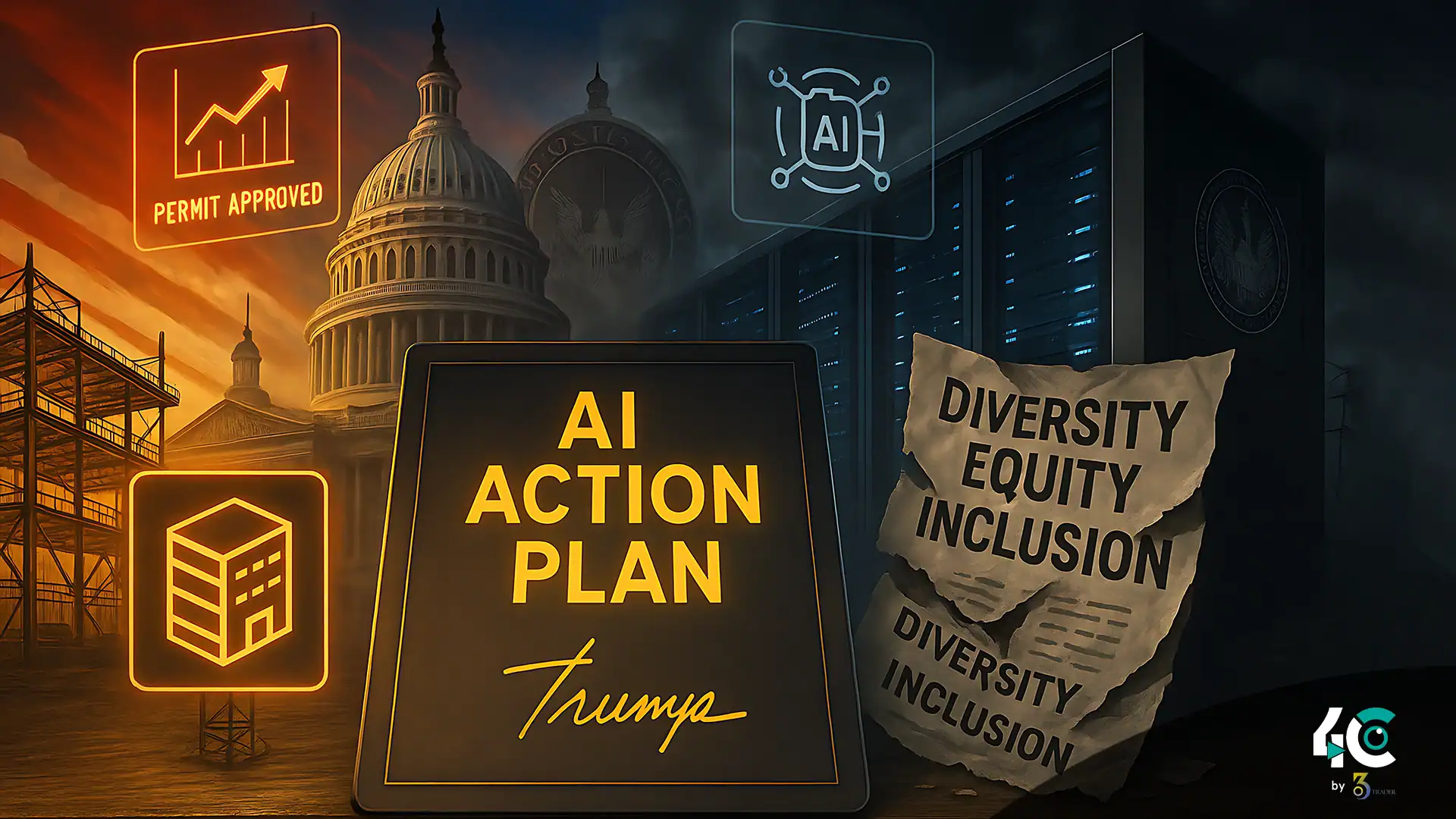President Donald Trump recently revealed his vision for the future of artificial intelligence (AI) in America, which he says will make the US king of AI. His administration’s new AI policy will cut regulatory red tape; favor select AI developers for federal contracts; remove all reference to diversity, equity, and inclusion (DEI) and climate change in federally funded AIs.
Trump said we’re going to accelerate innovation and make this industry the top at an AI summit in Washington. He signed several executive orders. One of the most noteworthy modifications: high-performance data centers would be classified to facilitate the approval process and avoid environmental restrictions arising from the Clean Air Act and National Environmental Policy Act.
A Three-Pillar AI Vision
According to a White House document, this new AI strategy rests on three main objectives—removing political bias from AI, making the U.S. the “world capital” of AI, and improving national infrastructure for next-gen technologies. This includes expanding semiconductor chip manufacturing in the U.S. as well as enhancing the energy grid to fulfill the massive electricity needs of AI via nuclear fission and fusion technologies.
Targeting DEI and “Ideological Agendas”
A key feature of the initiative is a crackdown on what Trump calls “woke AI.” His executive order will prohibit federal agencies from using AI models that push DEI or other concepts like critical race theory or gender identity. The government must only contract with AI vendors demonstrating ideological neutrality.
Trump stated that “We will only use AI that goes for truth and justice” and further added that the federal agencies’ chatbots must have no express partisan expression.
One National Standard, No Patchwork Laws
Trump’s proposal includes limiting state AI laws with a federal standard. If a state makes a law that slows down AI growth, the federal government might help them less. While this has been welcomed by big tech companies like OpenAI and Google, it has faced backlash from civil liberty champions and state lawmakers fearing overrun.
Anthropic has warned that although they support regulation, states should be allowed to stop firms from harming citizens with their AI models.
Rewriting AI Export Policy
The administration’s strategy reaches beyond Belgian borders. To boost America’s clout over global AI standards, plans aim to limit export controls and fund American AI exports through organizations like the U.S. Trade and Development Agency and the Export–Import Bank.
Industry Reaction: Support and Skepticism
The tech industry’s response has been mixed. Trump’s opposition to regulation and prioritizing the U.S. over others is welcomed by many AI companies. But experts say the dismantling of oversight and politicization of AI removes trust and encourages prejudice.
Critics are warning that by rejecting DEI principles and potentially banning factual information—like the science behind climate change—AI tools will amplify misinformation and further marginalize communities.
According to industry experts, “woke AI” isn’t the issue. It’s how users are interpreting the outputs. A recent study shows how a majority of the large language models do not show any bias towards an ideology. In fact, they can be seen to reflect the nuanced discourse as well as the complexity present on the Internet. But federal funding and contracts could force tech companies to conform to the competitive model, even if it includes straying away from their ethical standards.
Conclusion
Trump’s artificial intelligence blueprint marks a major change in how the U.S. thinks about artificial intelligence: speed and national control, not inclusivity and caution. The government has said that AI is both a geopolitical and economic tool. As such, the industry must innovate aggressively while at the same time play ball with the government and ensure the public remains on board with developments. We will find out whether this gamble pays off or not, but one thing is clear: the AI arms race has now become a key part of Trump’s second-term plan.

































